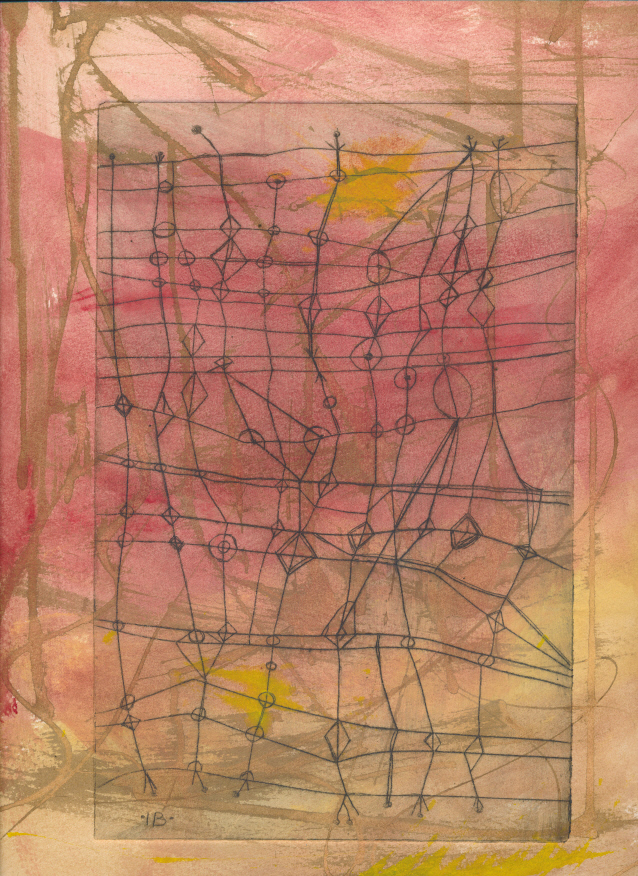
I’ve been looking at the Ocean Park series of paintings and prints by Richard Diebenkorn (via this book.) There is something about them that keeps drawing me back. They are deceptively simple with subdued colours, apparently just variations on geometric subdivisions of a rectangle. This makes them seem akin to Mondrian, but for me, they have much more depth. They also owe much to Klee, and perhaps also to de Kooning, at least in terms of colour values. In the end, though, they are themselves and stand on their own merits.
When I was at school, studying maths, we were always told to ‘show your workings’. In many ways, that’s what is going on with the Ocean Park paintings. Variations, second thoughts have been painted over, but their ghosts remain.

I think this is part of their appeal to me. I’ve always been intrigued by the idea of palimpsest, even before I became an artist. Both the urban and rural landscapes of Britain can be viewed as archaeological palimpsests. Take the time to look around any British town or city, and you will find signs of previous activities. The street pattern in many Northern industrial towns can often be mapped against ancient field boundaries. Alignments going back into pre-history may still be seen.
Beneath the streets archaeological investigations and civil engineering projects alike reveal layer after layer of activity. (for example Crossrail). The same applies in the wider landscape. Anyone familiar with Britain, will read into these paintings the pattern of fields, woods and lakes which almost define the English landscape. That landscape is almost entirely man made, even in the supposed wild areas like Dartmoor or the Scottish Highlands. It is not ‘natural’ but has developed out of complex and cumulative processes of human intervention.
So just as imperfections and variations disturb the surface of the modern world, revealing its past to those who look, so the Ocean Park paintings reflect the process of their creation, revealing the changes made, and to my mind, humanising their geometrical abstraction.
I’ll come back to this another time with images from prints inspired to a degree by Klee and Diebenkorn. I’m also planning some new work which will attempt to marry the geometry of this work to another interest of mine, the rock carvings and standing stones of the Neolithic era. Here are a taster with a collagraph monoprint I called ‘Frome Westport to Ocean Park’.

I love how you describe the ‘workings’, be it in art or landscape.